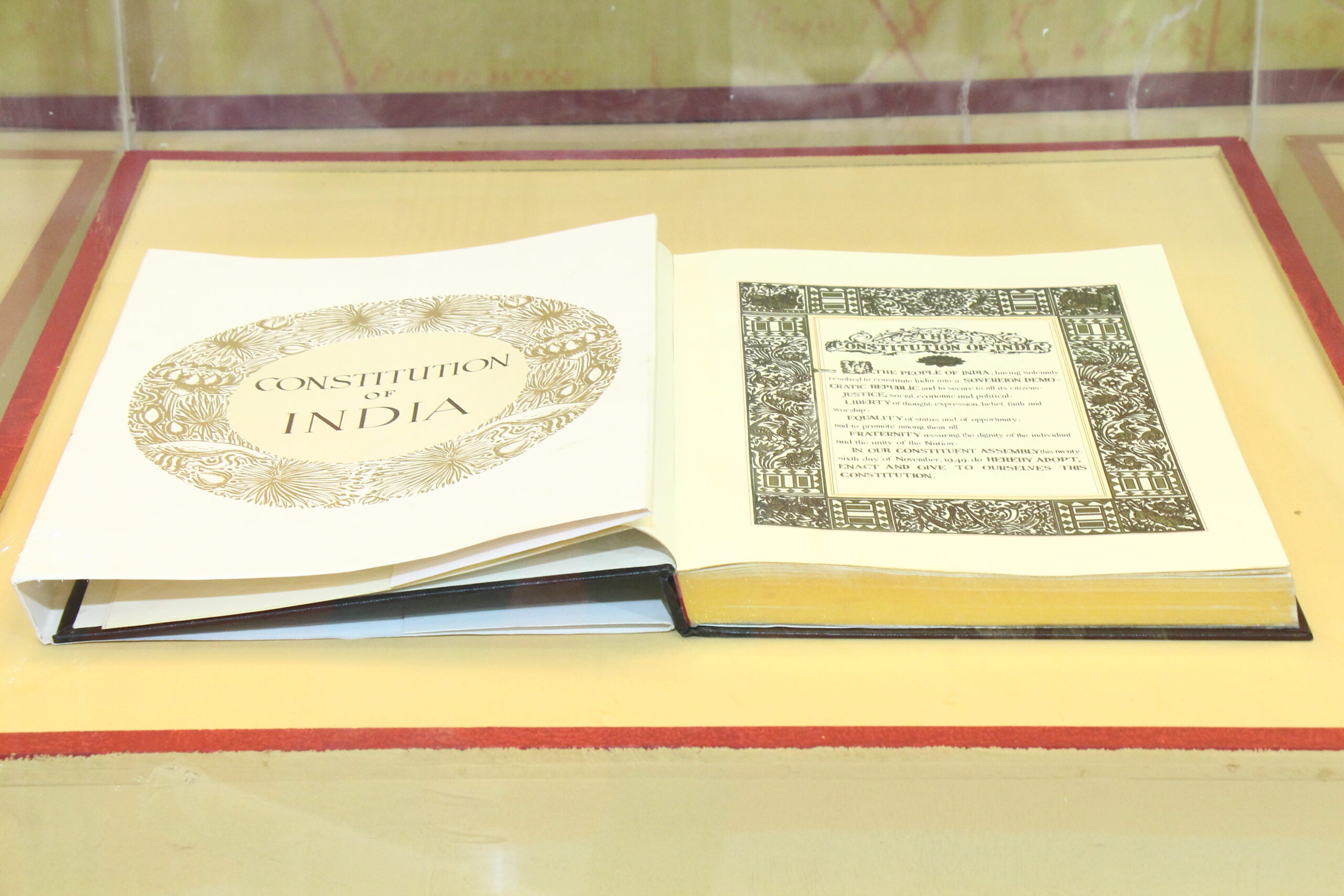The “basic structure” doctrine in the Indian context has evolved through a series of landmark judgements and amendments. Various judges in different cases have expressed their views on what constitutes the “basic structure” of the Indian Constitution, and this has led to differing interpretations and versions of this concept.

Constitution of India at the Geospatial World Forum 2017 (Hyderabad, India)
The most important of these judgements is the Kesavananda Bharati v. State of Kerala of 1973 states that certain provisions of the Indian Constitution are integral to its framework and that they are immune to change or elimination by amendments made under Article 368.
The essential features of the basic structure of the Indian Constitution include:
- Supremacy of the Constitution : The Constitution of India is the supreme law of the land and all other laws must be consistent with it.
- Rule of law: Everyone is equal before the law and no one is above the law.
- Fundamental Rights: Fundamental rights are the basic human rights that are guaranteed to all citizens of India by the Constitution. They are essential for the proper and harmonious development of the personality and life of every individual.
The Constitution of India, contains a detailed list of Fundamental Rights in Part III (Articles 12-35). These rights are enforceable by the courts in case of any violation. However, they are not absolute, but subject to reasonable restrictions imposed by the state in the interest of public order, morality, security, etc. They can be regulated or limited by the judiciary, legislature or executive through interpretations, laws or government decisions that do not need the approval of Parliament (executive orders), if such regulation or limitation is necessary for the protection of certain public interests or values. For example, the executive can restrict the freedom of speech and expression of a person if it is likely to cause a breach of peace, incite violence, defame someone, or harm the relations with a foreign country.
(Article 14, 19 and 21 together are also known as the ‘golden triangle’ of the Constitution and are often read together in courts, because they are interdependent and essential for the rule of law and the basic structure of the Constitution)
- Directive Principles of State Policy: The Constitution lays down a number of directive principles of state policy, which are guidelines for the government to follow. They aim to ensure social, economic and political justice, as well as the welfare of the people and the nation. Directive Principles are not legally enforceable by the courts, unlike the Fundamental Rights. They are only moral obligations of the state, which it should try to achieve as far as possible. However, they are not subordinate to Fundamental Rights. In Minerva Mills v/s Union of India Case (1980), the Supreme Court directed that, “The harmony and balance between Fundamental Rights and Directive Principles of State Policy is an essential feature of the basic structure of the Constitution.”
- Separation of Powers: : The three branches of government, i.e., Legislature, Judiciary and Executive are separate and independent of each other. These three organs of the government have distinct functions and powers that are assigned to them by the Constitution. They do not interfere with each other’s functions and powers, unless necessary, and respect each other’s autonomy and authority.
- Secularism: Secularism is the principle of separating religion and state, which means that the government does not favour or interfere with any religion, and that all citizens have equal rights and freedoms regardless of their religious beliefs.
The Supreme Court has come up with these features in the basic structure of the Constitution to make sure that the government continues to be democratic and serves the citizens. The government should ideally respect and abide by the Supreme Court decision in good faith and spirit. However, the government can file a review petition or a curative petition before the Supreme Court to challenge its decision. A review petition is a request to the same bench of judges who delivered the judgement to reconsider it on the basis of some error or mistake. A curative petition is a request to the Chief Justice of India to constitute a larger bench of judges to re-examine the judgement on the ground of gross injustice or violation of natural justice. However, both these petitions are rarely entertained or accepted by the Supreme Court, as they have to meet very strict and high standards of merit and evidence. The Supreme Court does not usually change or reverse its own decisions, unless there is a compelling reason or a change of circumstances.
The government can also amend the Constitution to validate the law that was struck down by the Supreme Court. However, this option is also subject to judicial scrutiny and may not succeed if the amendment violates the basic structure doctrine. Therefore, the government cannot override or bypass the Supreme Court decision by amending the Constitution in a way that violates the basic structure doctrine. The Supreme Court decision is not a hindrance, but a guidance for the government to act in accordance with the Constitution and the rule of law. That is, the Supreme Court decision is not meant to challenge or undermine the authority or legitimacy of the government, but to complement and support it in fulfilling its constitutional duties and obligations. The Supreme Court is the guardian and interpreter of the Constitution, and it has the final say on what the Constitution means and how it should be applied. Thus, through various cases, the Supreme Court has done its duty to uphold the Constitution and its basic structure in favour of the people and their rights.
